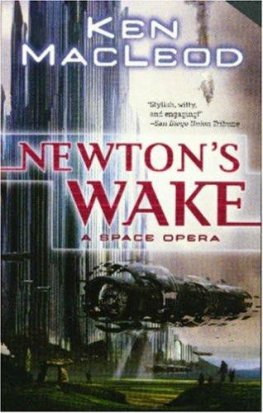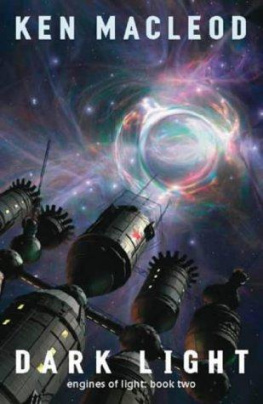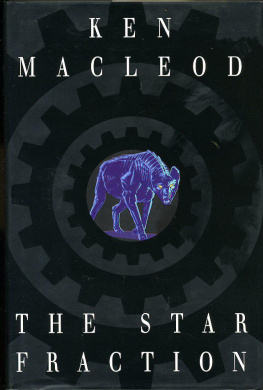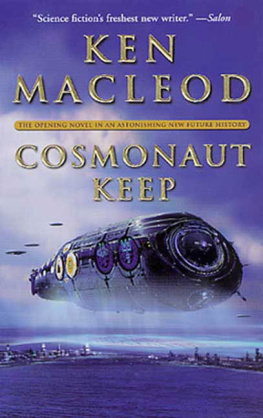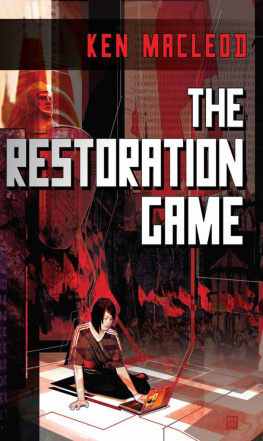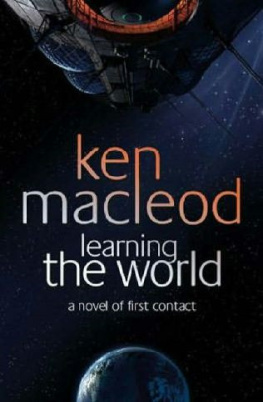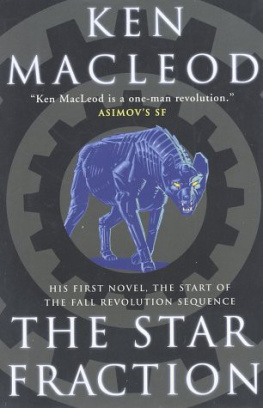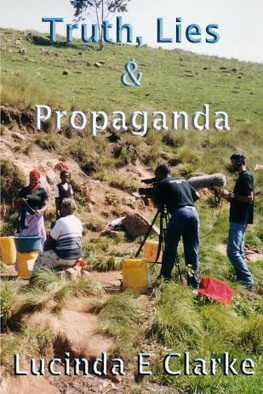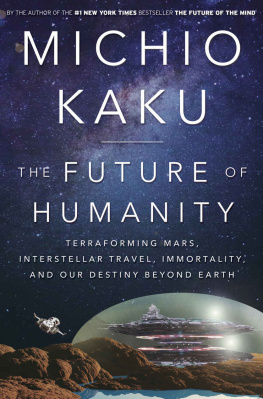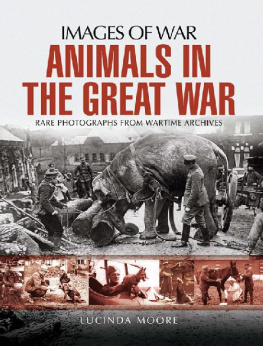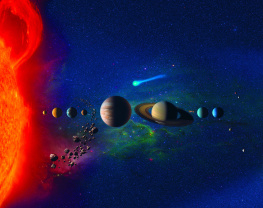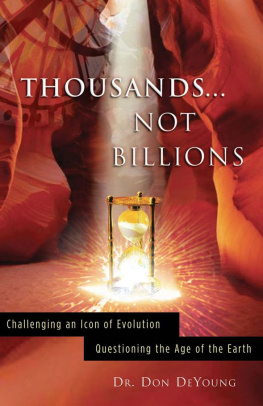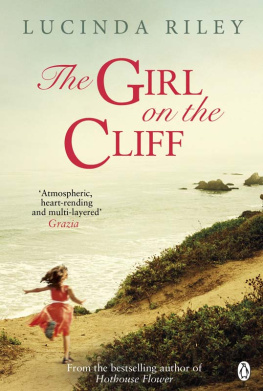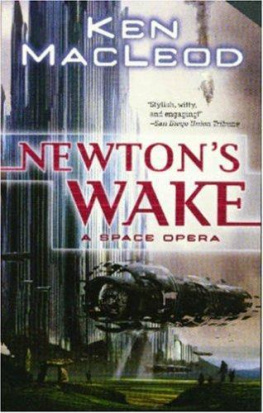Ken MacLeod
NEWTONS WAKE
A Space Opera
Thanks to Carol, Sharon, and Michael for lots, as ever; to Charlie Stross for sound advice; to Farah Mendlesohn for critical reading and comments on the first draft; and to Mic Cheetham, Tim Holman, and Patrick Nielsen Hayden.
CHAPTER 1
Combat Archaeology
As soon as she stepped through the gate Lucinda Carlyle knew the planet had been taken, and knew it would be worth taking back. It bore the thumbprints of hurried terraforming: bluish grass and moss, low shrubbery like heather. No animal life was visible, but she had no doubt it was there. Five kilometres away across an otherwise barren moor dotted with outcrops and bogs a kilometre-high diamond machine speared the sky. Complex in aspect, somewhere between a basaltic cliff and a cathedral, it had shown up on the robot probe, but that was nothing compared to actually looking at it.
She turned away from it and looked back at the gate. It was marked by a hilltop henge, whether by the gates builders or by subsequent, less sophisticated minds she couldnt guess: two three-metre slabs upended, and topped by a third. One by one her team stepped forth from the unlikely shimmer and gazed around at the landscape. A yellow G5 sun blinked a bleary, watery morning eye over the horizon.
Grim place, said Macaulay, the ordnance fellow, as drizzle gusted. Minds me a Scotland. He heaved a Charnley plasma cannon to his shoulder, mimed a shot at the distant edifice, andabashed by Carlyles sudden glarelooked to the robot walkers that carried the heavier gear.
Divil you were ever in Scotland, jeered Amelia Orr, comms op and Carlyles great-great-grandmother, who had been.
Shut it, said Carlyle. She flinched slightly at her own words, but she was in charge here, and she had to stamp authority on seniority, and fast. She strongly suspected that Orr had been put on the team to keep an eye on her, and harboured contingency plans to take over if Carlyle faltered. On the inside of her helmet the names of the rest of the ten-person team lit up one by one. Meanwhile the suits firewalls fenced with the atmosphere. The planet was habitableinhabited, even, damn their cheekbut its bacteria, viruses, and fungi all had to be neutralised. It would be an hour or more before the suits had passed on the new immunities to the teams bloodstreams, and the suits, or at least the helmets, could be dispensed with.
Are you picking up anything? she asked Orr, in a carefully polite tone.
The older woman tight-beamed a glyph of to Carlyles head-up. Usual encrypted chatter. Some music. Dye want to hear it?
Carlyle raised a suit-gloved hand. No the now. She swept the hand forward. Come on guys, this is gonna be a slog.
It was.
Two hours later their suits were covered in mud and stained with bits of the local analogues of bracken, moss, and lichen, crawling with tiny tenlegged analogues of arthropods, and their firewalls were still running the virtual equivalent of fever, but they were all standing in front of the glittering cliffs. Carlyle let the team deploy a hundred metres away from the first visible ground-level gap and consulted her familiar. Professor Isaac Shlaim was an Israeli comp sci academic whose vicissitudes since the Hard Rapture could have filled a book, and had. So far Carlyle had resisted his entreaties to have it published.
Whaddae ye make of it? she asked.
The familiars icon filled a quadrant of the head-up. The icon was a caricatured face that Lucinda varied whenever she felt too uncomfortably reminded that Shlaim had once been human.
From after my time, he said, a slightly smug tone overlying his usual mixture of resentment and resignation to his plight. Can you confirm that it is the only such artifact on the planet?
No.
May I access your remote sensing equipment?
Carlyle hesitated. The familiars efforts to escape the circuits of her suit were as predictable as they were persistent. On the other hand, she needed his assistance more than usual.
Ill scan then gie ye a download, she compromised.
Excellent! said Shlaim. Even centuries removed from muscle-tone and breath, his cheerful compliance sounded forced.
The radar and sonar pings and full-spectrum scan took about a minute and returned a mass of data quite incomprehensible to Carlyle, or to any individual human. She filed it, isolated it, and tipped it and a copy of Shlaim into a firewalled box. Let the poor bugger fight whatever demons might lurk in the electromagnetic echoes of the posthuman relic before them.
Macaulay was chivvying his iron gorillas into setting up the field pieces to triangulate the provisionally identified entrance. Orr was lying on her back surrounded by small dish aerials. The other team members were prone on the edge of a dip, periscope sights and plasma rifles poking over it, for whatever good that would do. From here the irregularities of the diamond cliff looked like crenellated battlements, its high black hollows like loopholes. But there was no evidence anywhere Carlyle could see of firing on the moor: no burn marks in the knotty ankle-high scrub, no glazed slag. The sense of being watched was overpowering, but she knew from experience that this meant nothing. Shed felt the same tension on the back of her neck in front of natural cliffs.
She ducked to stay beneath this nominal skyline and ran over to Jenny Stevenson, the biologist, who had one hand on her rifle and with the other was picking bits of grot off her suit and feeding them into an analyser.
Hows it looking? Carlyle asked.
Stevensons brown-eyed gaze flicked from her head-up to focus on Carlyle, and crinkled to show the top of a smile. Her grubby gloves thumb and forefinger formed an O.
Compatible, she said. After weve got the immunities, we could turn they plants into food, nae bother.
Carlyle flicked a finger at a clump of scrub, jangling its tiny violet bellshaped flowers. Is this really heather?
Naw really, said Stevenson. Her smile brightened. Just an analogue, like. Somebodys done a real sweet job on this. Took some ae the native life and adapted it. Ye can still see bits ae the native sequences in the DNA, braided in wi the terrestrial stuff. Every cell here must be running two genetic codes simultaneously, which is quite a trick. Im picking up signatures of they Darwin-Gosse machines fae way back, where was it?
Lalande 21185.
Aye, thats the one.
Good work, said Carlyle. This was a puzzle; AO, the main population of terraformers, mistrusted Darwin-Gosse machines, but it was always possible that a deviant sect had bought some. Thatll maybe gies a handle on the squatters. Speaking of which.
She rolled to Orr, staying outside the barrier of aerials. Have the locals spotted us yet?
Orr remained staring upward, at some combination of the real sky and the images being patched in from her apparatus. She didnt turn around; probably still smarting.
Nos far as I see. Place is under satellite surveillance, sure, but Ive no taen any pings. Most ae the actions round the other side of the planet, and all were picking up here is spillover. I got a few quantum demons grinding through the encryption. Should be cracked in an hour or so.
Any low orbit presence?
Orr waved a dismissive hand skyward. Scores of satellites. Sizes range between a grape and a grapefruit. No exactly heavy industry. Typical fucking farmers.
Any deep space stuff?
Aye, a few, but its hard to tell fae leakage ae tight-beam transmissions. The odd asteroid miner, I reckon. Maybe a fort or two.
Carlyle chewed a lip, sucked hot coffee from her helmet nipple. Makes sense. The squatters dont seem to be AO, whoever they are.

